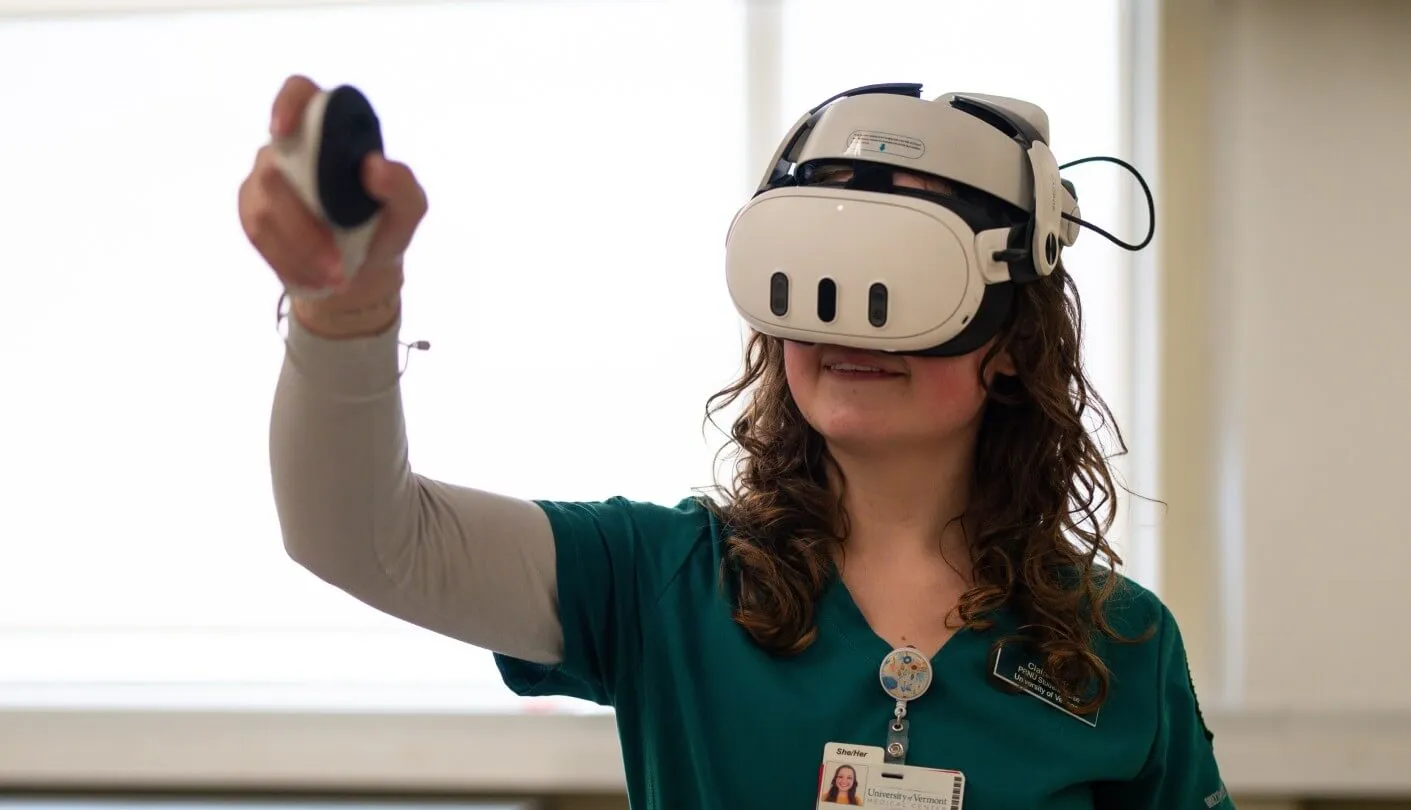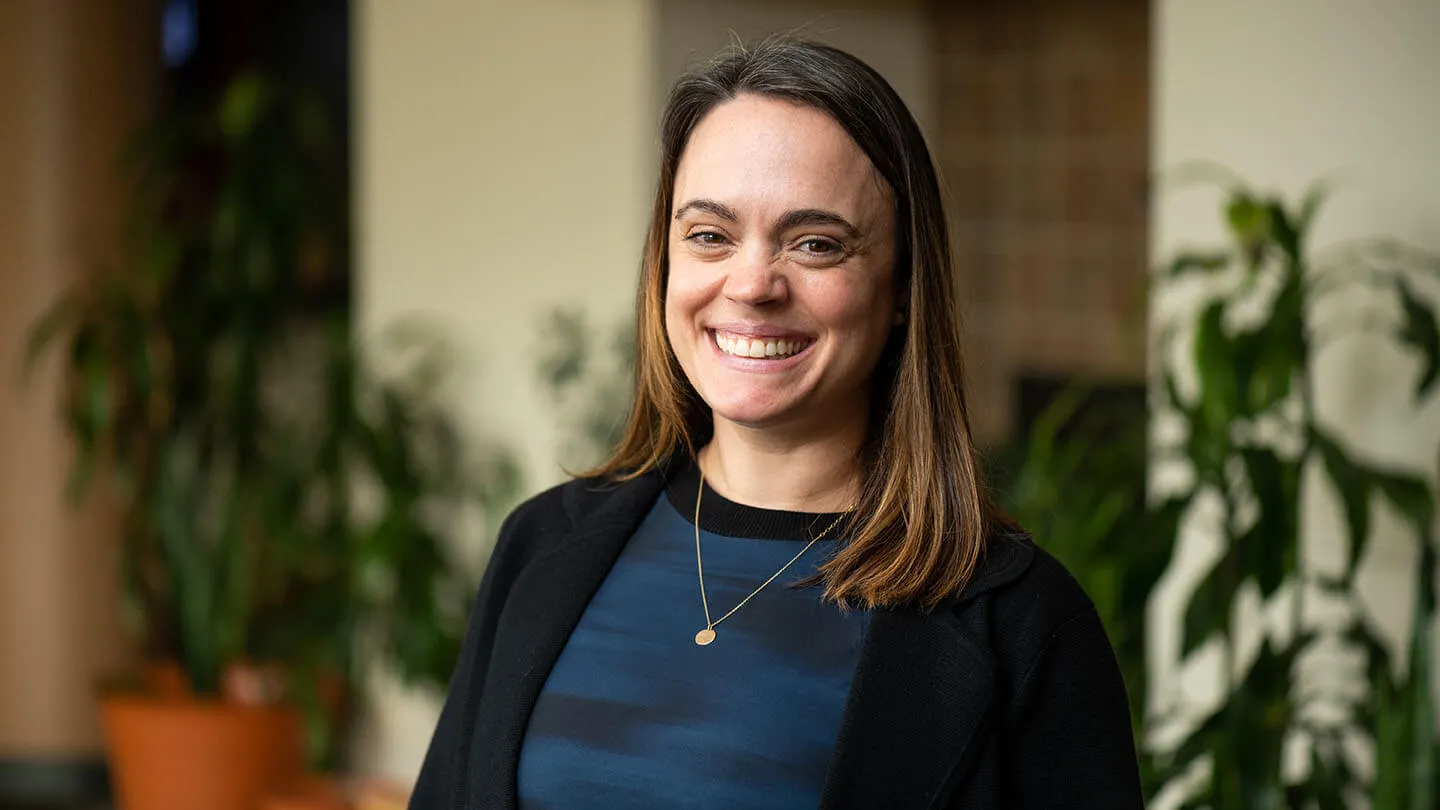This spring, the Department of Nursing introduced VR simulation to address the need to educate more student nurses as the program expands and to meet the growing expectation for demonstrated skills competency in the nursing profession.
“Faculty shortage and finite clinical practice settings limit the number of nursing students," said Rosemary Dale, Ed.D., APRN, CNHS associate dean for clinical practice, chair of the Department of Nursing, and the Holly and Bob Miller Endowed Professor of Nursing Leadership. "Virtual Reality creates controlled and repeatable scenarios to allow students to develop competence and confidence in support of their clinical practice experiences.”
Before beginning hands-on patient care, nursing students traditionally practice new skills in simulated scenarios at UVM’s Clinical Simulation Laboratory (CSL), a state-of-the-art, 9,000+ sq. ft. facility. The CSL offers a safe learning environment with advanced technologies such as high-fidelity human patient simulators, standardized patient actors, and task trainers for specific skills like urinary catheterization and tracheostomy care.
“The goal of simulation is to replicate reality as closely as possible,” said Sarah Manacek, clinical assistant professor and director of simulation education for the Department of Nursing. “For learning communication and therapeutic presence, real patient actors are essential. For psychomotor skills like CPR, mannequins provide the necessary feedback.” But simulations that require time to set up and repeat, like a patient hemorrhage, are a great opportunity for VR scenarios, and VR also excels for scenarios that require critical thinking and decision-making.
“We wanted to increase the use of simulation so that our students can apply classroom learning to real-world scenarios,” said Manacek. “By turning to VR, we’ve been able to increase simulation opportunities without expanding our physical space.”
To date, the Nursing program has completed 1,138 VR sessions, equating to 321 additional hours of active simulation and an average of five additional simulation experiences per learner.
In VR scenarios, student nurses can interact with avatars by speaking or using hand controllers to manipulate the environment. The VR educational software is customizable, allowing it to follow specific protocols and include digital assets matching settings found with the university’s clinical partners. Hundreds of scenarios address topics ranging from nursing assistant tasks to nurse practitioner roles; some scenarios address communication and de-escalation techniques, while others focus on critical thinking in emergency situations.
“Virtual reality is full immersion into a digital world,” explains Manacek. “Students experience complete immersion into a virtual hospital, where avatars are the same size as humans, follow students with their eyes, and respond using natural language processing and machine learning.”
Julia Otterbein, a UVM Nursing graduate from Beverly, Mass., who will begin her career in the Orthopedics Department at UVM Medical Center, said the new VR technology has been a beneficial aspect of her learning experience.
“I am a very hands-on learner, and I figure out new skills by trying them out,” said Otterbein. “Being able to run through different patient experiences and diagnoses via this program has been amazing. It gives you the chance to make those mistakes before you see them in the hospital and that knowledge and experience is something you can't replace.”
The department has purchased 16 new VR headsets and offers open lab hours for undergraduate students to practice, study, or make up missed clinical hours. This fall, VR will also be incorporated into the graduate nursing curriculum.


